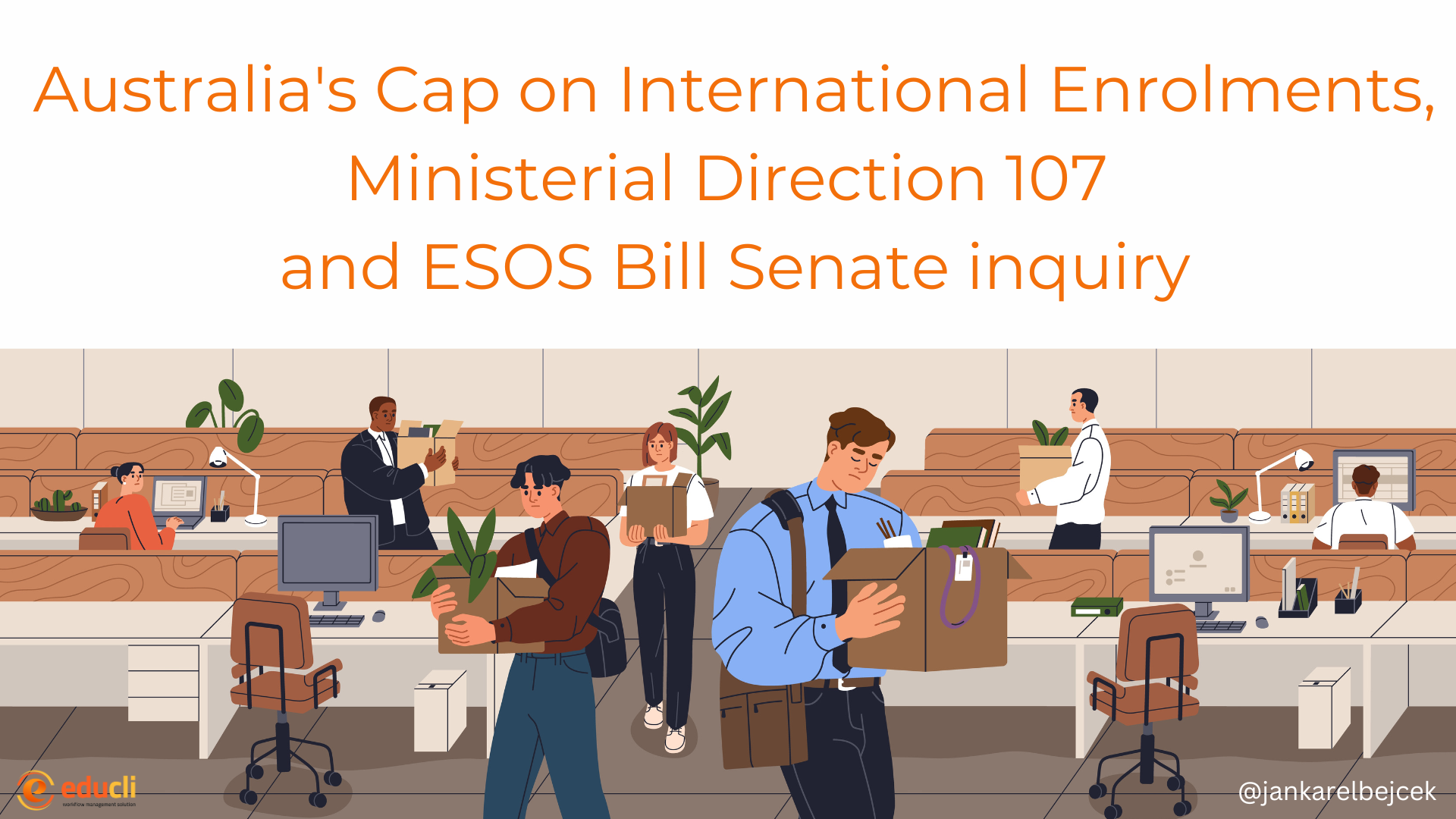Australia’s Cap on International Enrolments, Ministerial Direction 107 and ESOS Bill Senate inquiry
The proposed amendments to the Education Services for Overseas Students (ESOS) Act, which include capping the number of international students allowed into Australia and granting new ministerial powers to limit the number of students in individual university courses, have faced harsh criticism from sector leaders. These concerns were voiced during a Senate hearing in Sydney on August 26.
The Education Minister, Jason Clare, recently announced the introduction of a new cap on international enrolments, which will replace the current Ministerial Direction 107. Further details on the cap are expected to be unveiled in the coming weeks. Clare acknowledged the difficulties that universities have faced due to slower visa processing times and an increase in visa cancellations following the implementation of Ministerial Direction 107 in December 2023. He assured stakeholders that specific information about the new enrolment cap would be shared soon.
“A lot has changed over the last two years,” Clare said during his address at the Australian Financial Review’s Higher Education Summit in Sydney on August 20. “Two years ago, there were 521,831 international student enrolments in Australia. Today, that number has grown to 810,960.”
Despite the planned removal of Ministerial Direction 107, issues are expected to persist. As Tracey Harris pointed out, “Even if the government revokes Ministerial Direction 107, as flagged, there will still be a visa application process, and providers don’t know in advance which visas will be approved or refused.”
The rapid growth in international student numbers, particularly in vocational education and training (VET) courses, has attracted unscrupulous operators seeking quick profits and students more interested in working than studying. Ministerial Direction 107, which prioritises visa processing for students applying to low-risk institutions, has had mixed results. While some universities have benefited from faster visa processing, others have struggled. Clare acknowledged these challenges, stating, “It’s why a lot of universities have asked me to implement more sustainable arrangements. I understand that universities and other international education providers are eager for details, and those will be provided in the coming week.”
Clare emphasised the broader context of these changes, stating, “I know there is a lot happening, and I know change can be difficult. This is just one part of the education system. I am also driving similar reforms in school education and early education.”
The proposed course-level caps have also been criticised. ATN Universities executive director Ant Bagshaw said, “We cannot support course-level caps. Aside from the impracticality of implementing caps on tens of thousands of courses, they represent ministerial overreach. Students will – and should – study whatever makes sense for their aspirations and careers, noting Minister Clare has said that only around 16% of international students stay on in Australia after their studies end.”
In a subsequent interview with Julie Hare, education editor at the AFR, Clare elaborated on the relationship between Ministerial Direction 107 and the upcoming cap on international enrolments. He described the current system, which prioritises low-risk providers, as “effectively throttling the system right now,” and expressed confidence that the new cap would serve as a “better mechanism.”
The financial impact of these proposals has already been felt, with data errors from top Australian universities forcing the federal government to recalculate cuts to foreign student numbers. Private training providers have warned of 15,000 job losses as a result of the changes. During the Senate hearing, it was revealed that the Albanese government’s immigration crackdown on foreign students has led to a $674 million hit to the revenues of 13 universities so far this year.
The proposal to allow the education minister to set international student caps each year has been described as “totally unworkable.” Critics argue that the concentration of power in the hands of the minister is surprising and unfettered, comparable to powers typically reserved for national security legislation.
Private training colleges have warned that the crackdown on foreign students is “worse than Covid.” English Australia chief executive Ian Aird stated that some owners of English language colleges risk losing their homes. He noted, “Since December last year, student visa applications have been refused and delayed at record levels. The visa cuts alone will cost an estimated 15,000 jobs over the year. Some of our members tell us that the current government has done more damage to their business in the last six months than Covid did.”
Conclusion
The proposed amendments to the ESOS Act and the introduction of a cap on international enrolments appear to have been inadequately thought through, with little to no consultation with industry experts. The ongoing Senate inquiry is shedding light on these changes, revealing the potential disastrous impact on Australia’s international education sector. The lack of a clear strategy and the hasty implementation of these measures could have long-lasting negative consequences for the industry, potentially undermining Australia’s reputation as a leading destination for international students.





Leave A Comment